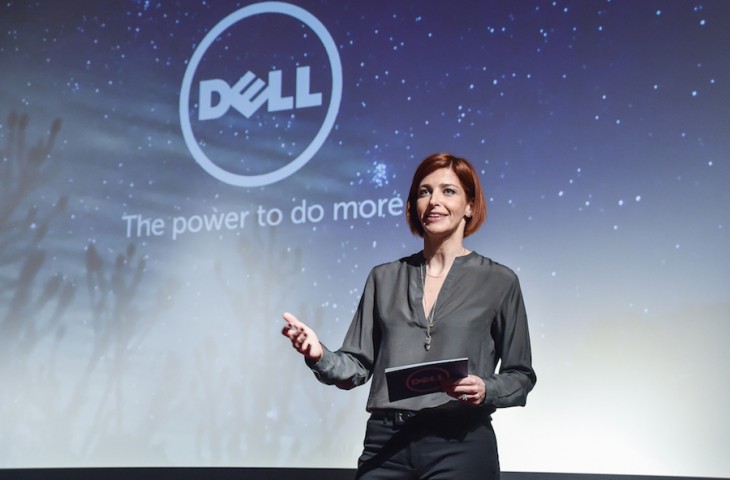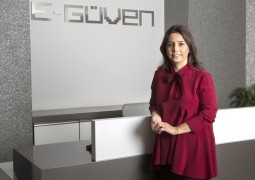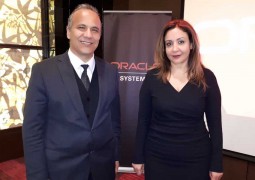Top 5 Ways to Empower the Future-Ready Enterprise
by 0

There’s a message for the business or IT leader wondering how to keep up with all the changing requirements shaping their enterprises: Hang on to your seats, because you haven’t seen anything yet. It’s been said that change is the one constant that organizations can count on, and there is little doubt that enterprises are going to be buffeted by more and more change in the days, months and years ahead.
 Dell Turkey Country Manager Didem Duru said the following about the issue:
Dell Turkey Country Manager Didem Duru said the following about the issue:
“Organizations in all industries have seen their core processes and assumptions challenged by dramatic changes in regulatory environments, competitive landscapes, technological upheaval, customer behavior, macroeconomic conditions and evolving security threats. In short, enterprises should be ready for anything, and their business framework should be similarly adaptable. That’s true whether you work in a line of business or, especially, if you’re part of an IT organization; as business conditions change in the future, IT will have to be part of that change. The big question for IT executives is how they will help drive their organizations to become better prepared for the future. The new IT initiative is clear: Help make the enterprise future-ready. The Future-Ready Enterprise (FRE) operates on the premise that business change will not only continue, it will likely accelerate due to a variety of external factors—many of which have not yet been uncovered. This has significant implications throughout the enterprise, especially for the IT organization. When IT is future-ready, it can help the organization survive new and evolving business pressures. Whatever the catalysts, executives in an FRE environment are under pressure to deliver improved business results, increase customer satisfaction, control costs, improve competitive standing and enhance employee productivity.”
Keep the lights on
For CIOs and other IT leaders, there is a two-part imperative mirroring the business priorities: First, IT departments must continue to do all the meat-and-potatoes activities that have been a hallmark of IT for years, such as supporting workloads, delivering and enhancing applications, maintaining and upgrading infrastructure, managing budgets and ensuring security. But now, IT organizations must also drive initiatives to accelerate the business. Since numerous studies have noted that “keeping the lights on” initiatives constitute about 70% of a typical IT budget, it’s essential Top 5 Ways to Empower the Future-Ready Enterprise to find new ways to make that 70% of the budget drive transformative solutions that advance the business. That means that IT organizations must deliver a scalable, end-to-end set of infrastructure, architecture and services that speed time to value, facilitate ease of use and user onboarding, and make it much, much easier for organizations to adapt to change.
Optimized workloads: Whether you’re talking about databases, e-commerce, OLTP or strategic enterprise applications, the Future-Ready Enterprise ensures that those workloads deliver, and do it faster. That means IT solutions must enhance workload performance in a variety of ways, such as faster deployments, greater transaction volumes and speedier access. It also means there must be better delivery of information—more accurate, relevant and reliable—in order to help the FRE drive more business value.
Virtualized infrastructure: Many organizations have reached a wall on their initial forays into virtualization, with value leveling off after early deployments and not fulfilling virtualization’s full potential. In many cases, virtualization becomes too complex for organizations to either continue virtualizing or to expand their virtualization targets. The FRE needs to find ways to make virtualization easier, so they can virtualize more and more, and in turn, reduce both CapEx and OpEx.
Software-defined “everything”: In the Future-Ready Enterprise, infrastructure remains essential, but not necessarily the sole or even primary focus of IT organizations looking to future-proof the business. This shift from an infrastructuredefined to a software-based model is vital to the success of the FRE, as it enables more agility and greater efficiencies in the delivery and management of applications and services. By abstracting software from hardware, the FRE can unlock innovation, automate routine activities and avoid vendor lock-in. All this gives the organization maximum choice in infrastructure, operating systems and management platforms, allowing the FRE to evolve and leverage innovation at its own pace without worrying about vendors’ technology refresh cycles or undergoing forklift upgrades.
Cloud: By now, there is widespread agreement on the value of moving some data, infrastructure, applications and business processes to the cloud. The debate, however, now focuses on which to move and how best to manage on an ongoing basis. Once again, the FRE needs to address cloud in a manner that enables choice, rather than one that locks them into a particular vendor’s requirements. FREs need the ability to select from on-premises or off-premises deployment models, as well as the ability to mix and match among private, public and hybrid cloud designs as conditions warrant.
Big Data: Sure, everyone has heard of Big Data, and many people even have a reasonable idea what it can do. But planning, implementing and managing Big Data architectures is very different from many traditional IT frameworks; they can be difficult, time-consuming and expensive to put in place and manage. The FRE needs the ability to easily transition from Big Data pilot projects to deployments that can really provide tangible economic and competitive benefits. Once again, this means putting in place solutions flexible enough to deal with massive, fast-growing data sets in order to speed delivery of unique, actionable insights that lead to better decisions on complex questions. FREs need Big Data solutions that work for the way they work. That holds true whether they have staff in place that is familiar with the unique architectures characteristic of big data applications like Hadoop, or whether a pre-configured or validated solution that takes the guesswork out of deployment is in order.
There is no such thing as “one size fits all” for the Future-Ready Enterprise when it comes to information technology. Today’s FREs demand optimum choice and freedom in developing, deploying and operating systems that meet not only today’s demands but also those that come along down the line. The Future-Ready Enterprise is built on an agile, efficient foundation for growth, and requires technology solutions that do more than deliver faster feeds and speeds. Those solutions need to embrace the concepts of choice, flexibility, investment protection and open systems. As a result, they must be built on a portfolio of hardware, software and services that both anticipates and adapts to rapidly changing business conditions. Dell’s solutions approach is premised on the ability to deliver optimized products and services that bridge the gap between tried-and-true traditional IT capabilities and transformative, potential-rich new IT capabilities. By offering and supporting the best of both IT philosophies, Dell allows Future-Ready Enterprises to leverage the ideal framework to support their needs today and in the future.
This article contains the details of our video interview recorded during the event with Dell Turkey Country Manager Didem Duru in Turkish. The Turkish version of the video is in the following link.





